This article explores the essential components of a staircase, the different types of staircases available, and the key considerations that must be taken into account during the design process.
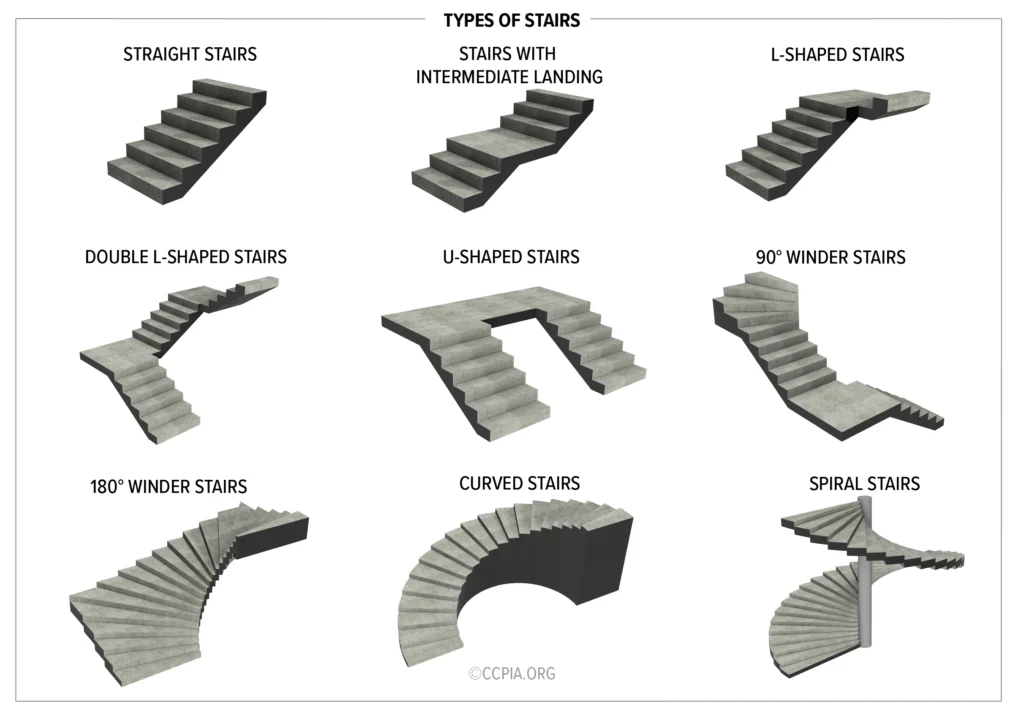
Staircases serve as crucial elements in architectural design, providing a functional and often decorative means of connecting different levels in a building. Whether in a home, office, commercial space, or public facility, the design of a staircase impacts how easily people move between floors. Beyond their utility, staircases also play a significant role in defining the style and flow of an interior space. A well-designed staircase balances aesthetics, practicality, and safety, blending seamlessly with the architectural layout and the intended use of the structure.
The importance of designing staircases cannot be understated. An inadequately designed staircase can lead to discomfort, safety risks, and wasted space. Moreover, staircases must comply with stringent building codes and standards to ensure that they are both accessible and safe for users. Factors such as the width of the steps, the height of the risers, and the angle of the staircase all come into play, requiring careful attention from architects and engineers. Staircase design is a blend of science and art, marrying structural considerations with design principles to create a feature that is not only functional but also visually appealing.
In this article, we will explore the essential components of a staircase, the different types of staircases available, and the key considerations that must be taken into account during the design process. Each of these aspects plays a vital role in determining how well a staircase will meet the needs of the building’s occupants while also contributing to the overall aesthetic of the structure.
Components of a Staircase
Understanding the individual components that make up a staircase is fundamental to creating a design that is both functional and safe. A staircase is made up of several interconnected elements, each of which must be carefully designed and constructed to ensure the overall structure is both strong and user-friendly.
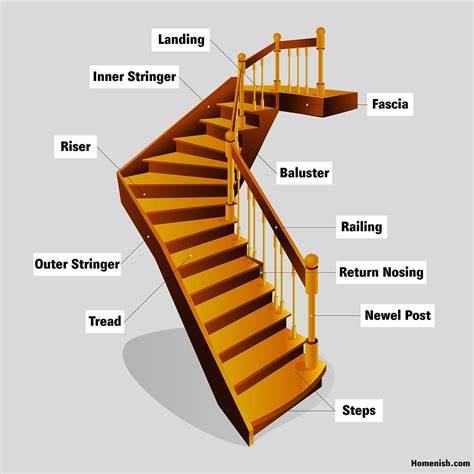
The Thread: it is one of the most important parts of a staircase, as it is the flat surface where the footrests when ascending or descending. The width and depth of the tread are crucial for safety and comfort. Too narrow a tread can make the staircase difficult to use, while a wide tread can increase the footprint of the staircase, potentially taking up more space than necessary.
The Riser: it is the vertical part between each tread. The height of the riser affects how easily people can move up and down the staircase. Too high a riser makes the steps difficult to climb, especially for older individuals or those with mobility issues. In contrast, risers that are too short can result in shallow steps, which may feel awkward to navigate. Striking the right balance between tread depth and riser height is essential for ergonomic staircase design.
Waist/Stringers: they are the sloped structures that run along the sides of the staircase, providing support for the treads and risers. Stringers can be positioned on either side of the staircase, or in some cases, in the center, depending on the type of staircase and the design aesthetic.
In addition to treads, risers, and stringers, landings are essential components in staircases with multiple flights or those that cover large vertical distances. A landing is a flat platform where the staircase changes direction or offers a resting point for users.
Types of Staircases
When designing a staircase, one of the key decisions involves choosing the right type. Different types of staircases are suited to different building layouts, functions, and design styles. The choice of staircase type has a significant impact on both the usability and the aesthetic appeal of the space.
Straight Staircases
They are the most common and straightforward design. As the name implies, these staircases move in a straight line from one level to another without any changes in direction. They are the simplest to design and construct and are highly practical in homes and commercial spaces where space is not a constraint. Because of their linear shape, straight staircases are often perceived as clean and modern, making them suitable for minimalist designs. They also tend to be more cost-effective than other staircase types, as they require fewer materials and less complex construction techniques.
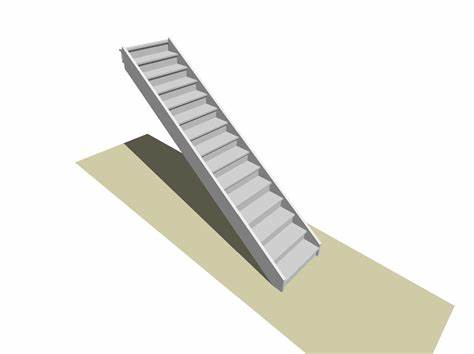
L-shaped Staircases
They introduce a 90-degree turn at some point along the staircase, typically at a landing. This design is useful for buildings with limited space, as the turn allows the staircase to fit into tighter spaces. L-shaped staircases are also more visually interesting than straight staircases, offering a break in the linear flow that can enhance the overall architectural design. These staircases are common in residential buildings, especially in homes where staircases need to fit within corners or along walls.
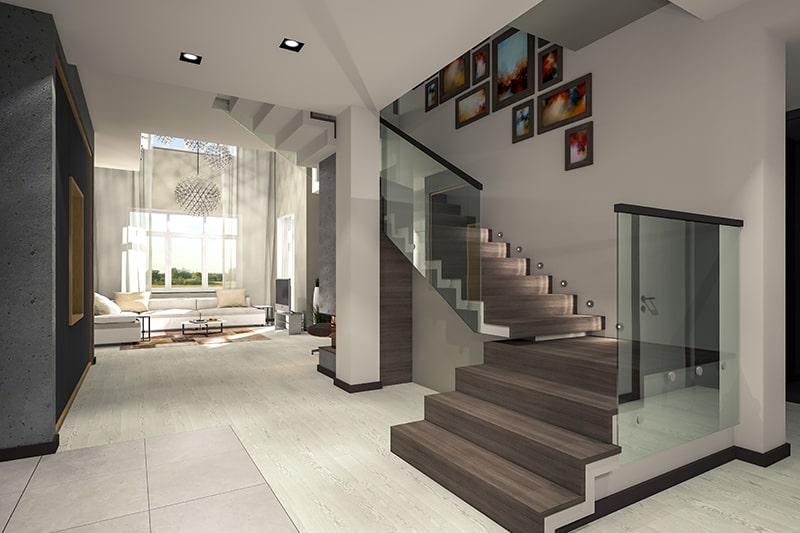
U-shaped Staircase
This staircase consists of two straight flights that run parallel to each other, connected by a landing. U-shaped staircases are often found in multistory buildings and are ideal for spaces that require a more compact design. The U-shape allows the staircase to fit within a smaller footprint, making it ideal for buildings where vertical circulation needs to be efficient. Additionally, U-shaped staircases provide better privacy between floors, as users cannot see directly from one level to another.
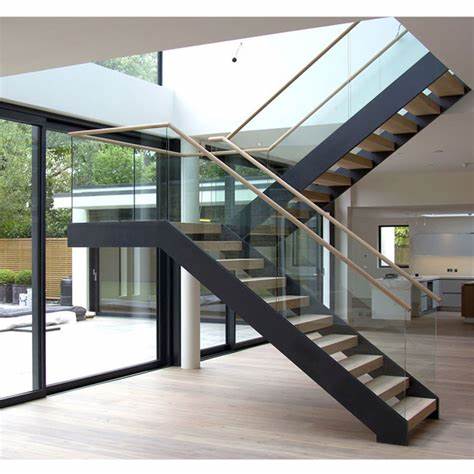
Spiral Staircases
They are a more decorative option that can be used to save space. These staircases spiral around a central pole, creating a compact design that is perfect for small spaces. Spiral staircases are commonly used in lofts, apartments, or as secondary staircases in homes. While they are visually striking, spiral staircases can be more difficult to navigate, especially for elderly individuals or those carrying large objects. Nevertheless, their space-saving design makes them a popular choice for certain architectural styles, particularly in modern and industrial designs.
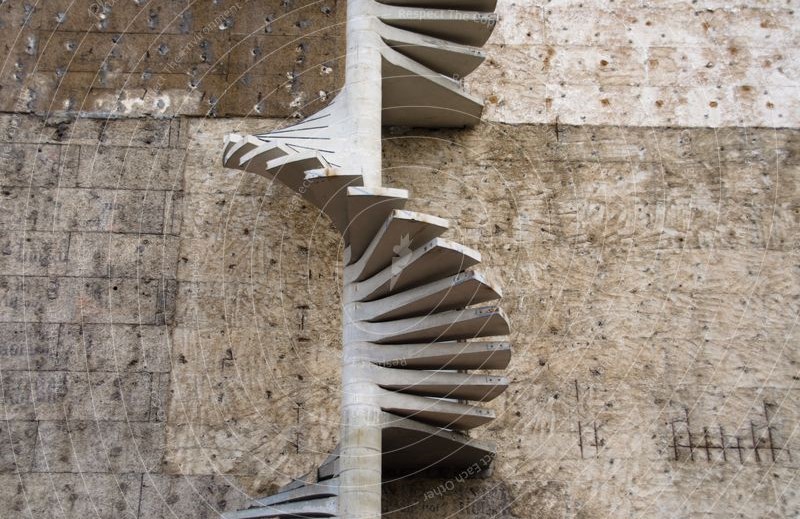
Floating staircases
They are an excellent option. These staircases appear to “float” without visible support, as the treads are anchored directly into the wall or supported by hidden stringers. Floating staircases are often used in contemporary designs to create a sense of openness and minimalism. However, they require careful structural planning to ensure safety and stability, as the lack of visible supports can pose engineering challenges. An example of a floating staircase is an helical staircase.
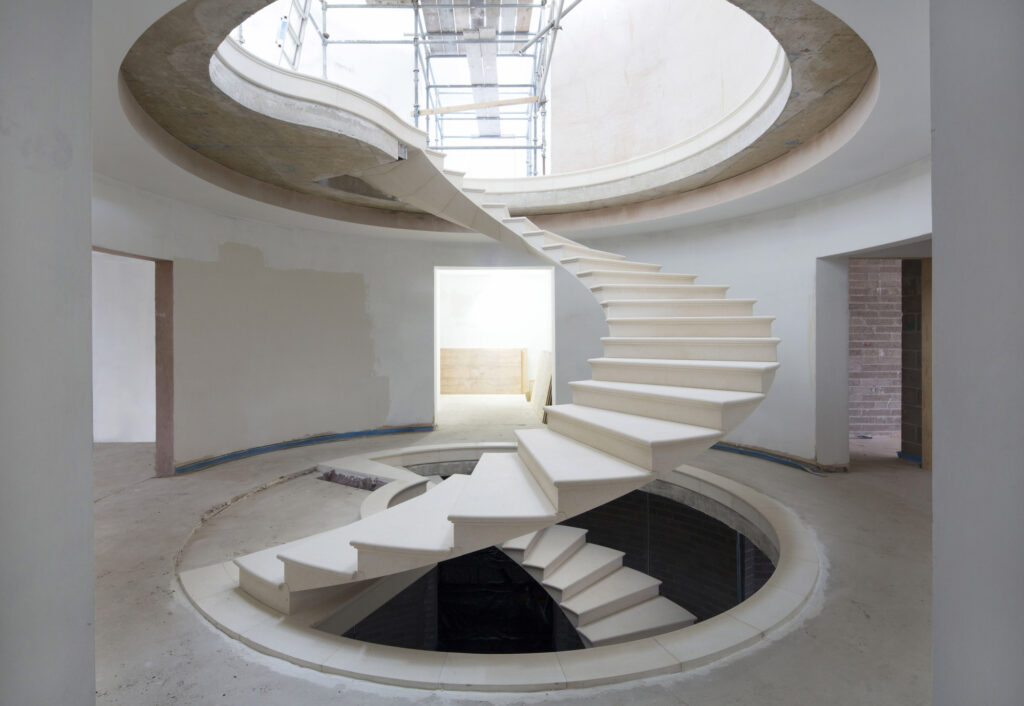
Key Considerations in Staircase Design
Designing a staircase involves more than simply choosing the type of staircase and its components. There are several important considerations that must be taken into account to ensure that the final design is both functional and aesthetically pleasing.
Safety
First and foremost is safety. Building codes and regulations set strict requirements for staircases, particularly concerning tread width, riser height, and the inclusion of handrails. These codes are in place to minimize the risk of accidents and ensure that staircases are accessible to all users, including those with disabilities. A poorly designed staircase can pose serious safety risks, so compliance with these regulations is essential.
Space Utilisation
Another important consideration is space utilisation. The amount of space available for the staircase will largely determine the type of staircase that can be used. In buildings with limited space, a spiral staircase or an L-shaped staircase may be more appropriate, as they take up less room than a straight staircase. On the other hand, larger spaces may accommodate more expansive designs, such as U-shaped or floating staircases, which can serve as focal points in the architectural layout.
Aesthetics
Aesthetics play a significant role in staircase design. The choice of materials, colors, and finishes can dramatically affect the look and feel of the staircase. For example, wood offers a warm and traditional appearance, while metal and glass create a more modern and sleek aesthetic. Designers must also consider how the staircase integrates with the surrounding space, ensuring that it complements the overall design of the building.
Ergonomics
This is another crucial factor. A well-designed staircase should be comfortable to use, with tread depths and riser heights that are proportionate to the average user. Staircases that are too steep or have uneven steps can cause discomfort and increase the risk of accidents. Attention to ergonomics is especially important in public buildings or homes with elderly residents, as these individuals may have difficulty navigating poorly designed stairs.
Material Selection
Lastly, the material selection for the staircase affects not only its appearance but also its durability and maintenance. Common materials include wood, concrete, metal, and glass, each of which has its own advantages and drawbacks. Wood is a popular choice for residential staircases due to its warmth and versatility, while concrete is favoured in commercial buildings for its strength and durability. Metal and glass are often used in modern designs, creating a sleek and industrial look. The choice of material will depend on the desired aesthetic, the building’s use, and the maintenance requirements.
See: Design of Stringer Beam in Staircases to EC2
Conclusion
The design of a staircase is a complex process that requires careful attention to both structural and aesthetic considerations. Choosing the right type of staircase, whether it be straight, L-shaped, U-shaped, or spiral, is essential for maximizing space and achieving the desired design style.
In addition, attention to important factors such as safety, ergonomics, and material selection ensures that the final design meets both practical and aesthetic needs. Staircases are more than just a means of moving between levels; they are an integral part of the architectural fabric of a building, contributing to its overall style, functionality, and safety.